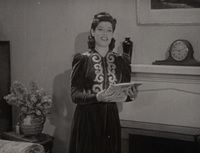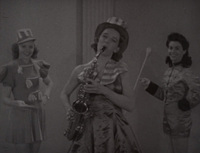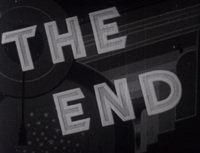Legacy of the Soundies

The buzzcut, a traditional military haircut, was featured in one Soundie. Perhaps helping to normalize the style.
With the end of World War II in 1945, there was hope that Panoram and Soundies production would pick up with the easing of wartime resource restrictions, but it never materialized. The failure of the initial creation of Soundies though allowed for the films to demonstrate their viability independent of the Panoram. Even before the collapse of Soundie production, Soundies found audiences outside of the Panoram through direct home film sales under the name of Castle’s Music Albums. For example, in 1945 Castle Films partnered with Soundies to create and release brief films to the public to be played by individuals with 16mm projection equipment at home, with multiple compilation films being created which connected three or more Soundies that had some sort of general theme (i.e., “Jazz and Jitters”). Blackhawk Films did a similar concept of direct home film sales in 1947 and 1948.79 In 1946 Soundies Distribution Company, ceased Soundies production, but the musical 16mm films were sustained under new direction under Soundies Films, Inc, until that company failed in 1947. After the failure of Soundies Films, Inc. the rights to Soundies were sold to independent distribution companies, for use in some film markets or combined and shown on television. Stations liked airing Soundies due to their short length and ease of stacking multiple films to fill odd amounts of airtime. Additionally, Soundies were shown to television audiences on shows with a dedicated theme of musical films, often with a deejay host or curator.80 Late production and the post-Panoram era solidified Soundies as viable products if not limited to pay-for-play formats.
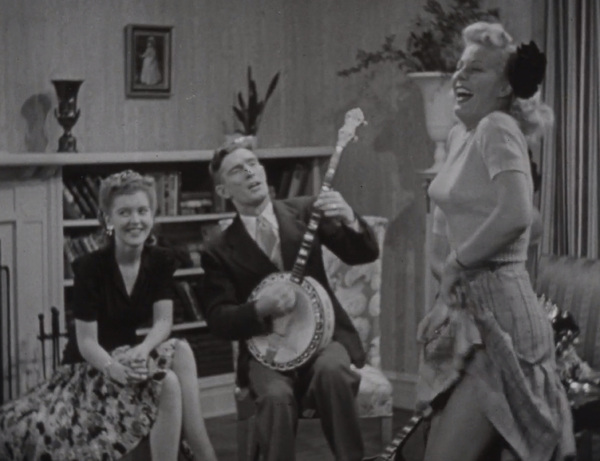
Although Soundies were quite risque for the period, Panorams would find even more exotic uses after the collapse of Soundies.
Taking a different path than Soundies, Panorams also found new uses after the closing of Soundies production in 1947. Even before the downfall of the Soundies Distribution Company, Panorams found additional use in photography studios, where the device was modified to play child-friendly cartoons or other content and mounted with a camera to capture photographs of children while they were happily distracted by the audiovisual content.82 Owners of Panoram machines were left with a 16mm pay-per-use film machine but no new films to show. To keep the flow of change coming, some owners altered their Panorams to create makeshift peep show devices, often putting privacy curtains around the screen and crafting signs on the outside of machines restricting access for minors or declaring the films “‘for art students only’”.81 Although records of modified peep show Panorams are limited, the machines appear to concentrate in arcades and nightlife establishments.83 The machines would stay relevant in this capacity until the 1960s and the rise of 8mm film, and even then the Panoram name would stay connected to peep shows and pornographic content through slang reference to such content as “Panoram Loops.”84 Even after the initial failure of Soundies and the advancement of technology, Panorams found uses for decades after their date of manufacture.
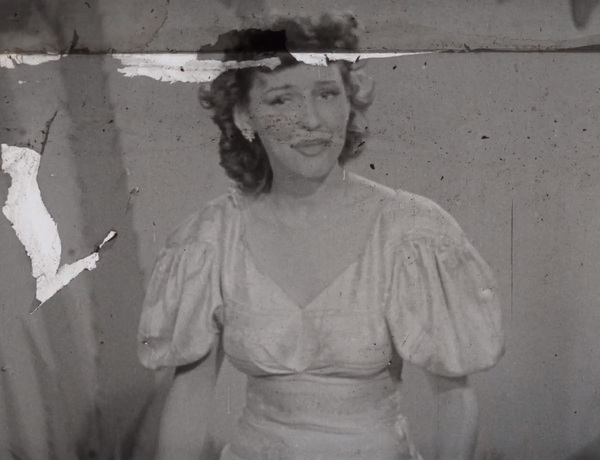
A shot from "Thanks for the Boogie Ride" showing film degradation, a common problem in archival films.
The Panoram and Soundies were an early entry on a much longer timeline of audiovisual, music-based inventions. In 1950 an attempt at a similar product as Soundies came from Snader TELEscriptions. This product curated a collection of old and public domain music put to visuals and was marketed directly to television stations. TELEscriptions, like Soundies, were bought and used by disc jockey television programs, most notably American Bandstand. The product only lasted about two years, and failed due to logistical issues and a lack of pursuit of current musical acts.85 Scopitones, another audiovisual jukebox product, started 13 years after the end of Soundies and added some stylistic and mechanical changes. Created by the French company Compagnie d’Applications Méchaniques à l’Electronique au Cinéma et à l’Atomistique (CAMECA) in 1960, Scopitones were 16mm films that added visuals to recorded music. Thanks to technological advancements Scopitone jukeboxes had some improvements over the Panoram, including color visuals, improved magnetic soundtracks in favor of optical, and up to a 36 short film capacity over the standard eight films found in a Soundies reel. Moreover Scopitone machines possessed the ability for users to self-select an individual short film to play unlike the Panoram which required the reel to be cycled through in order. Unfortunately the selection mechanism on Scopitone players required a delay up to five minutes between selections, while users watched advertisements or other images on screen.86 The films themselves centered on musical performances and visual appeal came from highly sexualized images of women, even more so than Soundies.87 Scopitones were distributed in Europe before entrance into the U.S. market in 1963. By 1964, Scopitone, Inc. created a visual jukebox for purchase with Scopitone films in the U.S. market. By 1966, the company had about 3,000 machines in the U.S. and around 5,000 spread throughout Europe.88 As fast as Scopitones rose to prominence so too did they fall, with sharp declines in popularity by the late 1960s with a lack of appeal to youth markets.89
The Soundies legacy is also connected to larger television trends. Soundies have remarkable similarities to television variety shows, like The Lawrence Welk Show, which ran from 1951 until 1971. With a whole reel of Soundies taken together as an equivalent to one episode of, say, Lawrence Welk, each consisted of a series of short performances that ranged in style or genre from Vaudeville-inspired acts to musical performances by up-and-coming musicians.90 Though, Lawrence Welk and other television shows like it reduced the jarring effects of transitioning between performances with charismatic hosts and occasional in-house performances or conversations. Also separating variety shows from Soundies were the penchant for live audiences, creating the impression of a concert experience while Soundies singled out the performers without clapping or audience involvement. Decades later, the advent of the cable television channel MTV prompted additional connections to Soundies. Although Soundies did create visuals to go along with musical numbers in a commercial setting, many Soundies would not likely be shown on MTV from their launch in 1981, such as those more akin to Vaudeville numbers or deeply patriotic and meant to sell war bonds. Furthermore, while the entertainment industry embraced MTV as a new source of revenue and advertising for the music industry, Soundies were seen in a negative light with the existing audiovisual industry, with many larger stars and agents avoiding the platform.91 Given the relatively short existence of Soundies, aspects of the medium could be seen on television screens for decades after.
More generally, Soundies and Panorams hold significance as an early experimentation of space in the presentation of audiovisual materials. Before Soundies and more portable 16mm film, moving images were mostly limited to the large, dedicated spaces of movie theaters. Soundies and Panorams brought the commercial moving image out of the confined theater and into a variety of everyday, communal spaces.92 Further, unlike a movie theater where the screen is the main focus of attention, Panorams were often side attractions in busy places, blending into noisy locations and competing for attention.93 While television screens regularly inhabit public and commercial spaces nowadays, like bars, restaurants, break rooms, and public transportation stations, placing Panorams in these areas was new and full of risk.94 Although the product ultimately failed for the company, Soundies and their playing machines helped to normalize moving images and screens virtually anywhere, a development other products would build upon.


